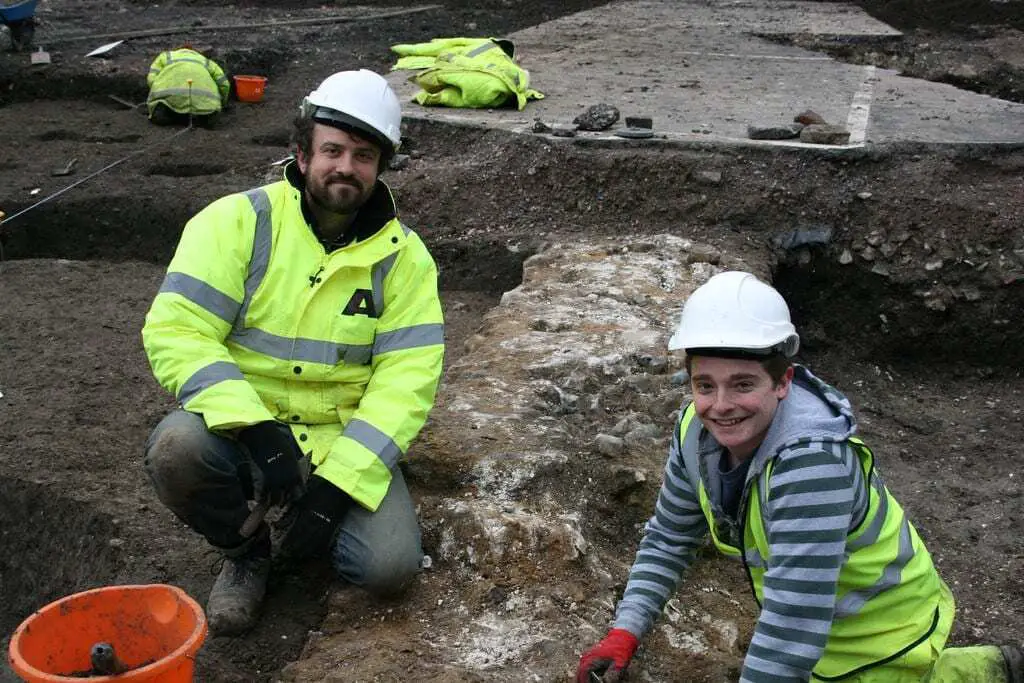Canterbury Archaeological Trust (CAT) has uncovered the footings of the St Augustine’s Abbey precinct wall, dating back to the 14th Century, on Canterbury Christ Church University’s North Holmes Campus.
As part of the University’s Estate Master Plan, a £12 million state-of-the-art Arts Building is due to be built on the North Holmes campus to support the region’s creative art and digital industries. CAT excavated the site ahead of the University’s proposal to build to find out more about the area, ensuring Medieval, Anglo-Saxon and Bronze Age remains are preserved.
To mark the importance of the site’s connection with the World Heritage Site, the abbey precinct wall will be celebrated within the building, with plans to expose a section of the wall beneath the glass in the main reception.
Dr Andy Seaman is a Senior Lecturer in post-Roman and medieval Archaeology, he said: “As a medieval archaeologist myself, I am very excited about what the excavation tells us about the history of the abbey and the lives of its inhabitants.

“The excavation has also been fantastic for our students because it gives them an opportunity to witness an excavation from beginning to end, enabling them to see how the techniques they learn in lectures are put into practice in the field. This will help them to prepare for when they go on their own excavation placements this summer.”
James Revell and Nick Lawrence studied archaeology at Christ Church and both started working for CAT after graduating in 2015. They are now back on the North Holmes Campus to work on the site.
James said: “I feel proud to be using my degree for what I aimed to become, especially with the Canterbury Archaeological Trust. I find it both brilliant and convenient that I have returned to my University to work.
“I am very pleased to have worked with my friend Nick and my tutor Andy on the site. Nick and I are learning a lot with CAT, it is nice to hear our tutors are proud of us for pursuing and achieving our goals.”
The Arts Building will open in September 2018 and will be shared by the Schools of Media, Art and Design and Music and Performing Arts. The building will house specialist teaching facilities, including space for performance and music, design studios and the latest technology to support new and existing courses.
If you are interested in studying Archaeology at Christ Church or would like to find out more about the University’s Estate Master Plan, follow the links in the ‘Find out more’ section on this page.
Canterbury Archaeological Trust







